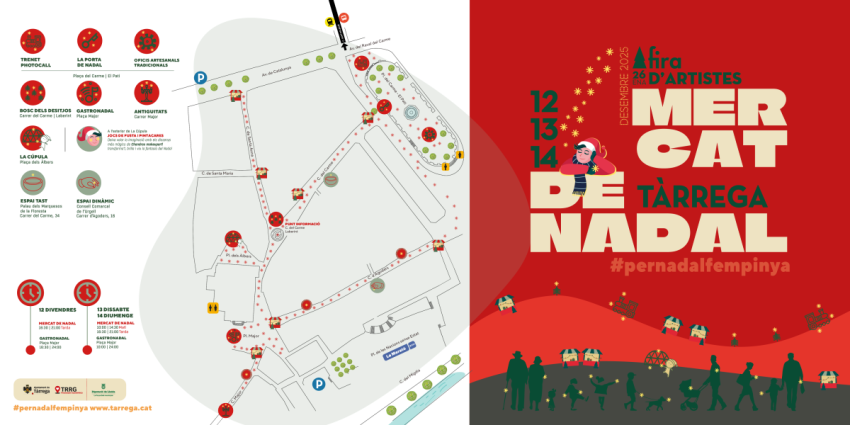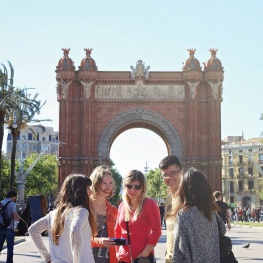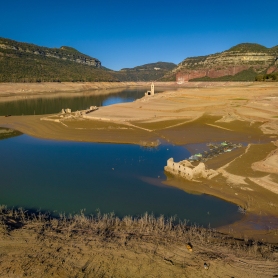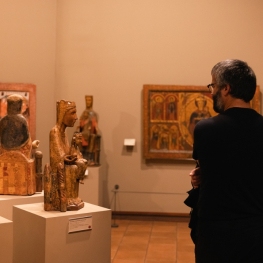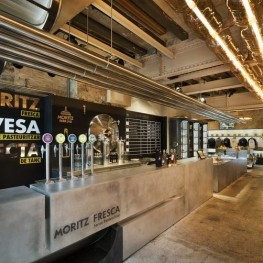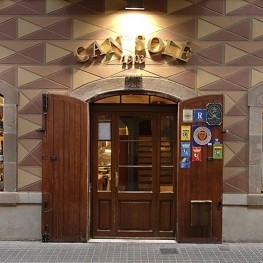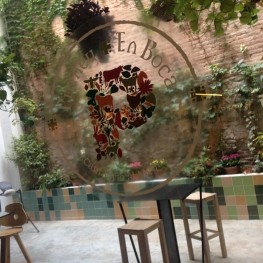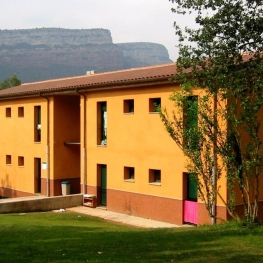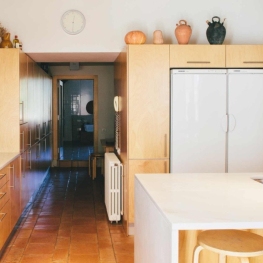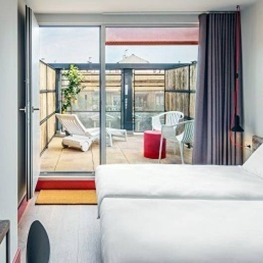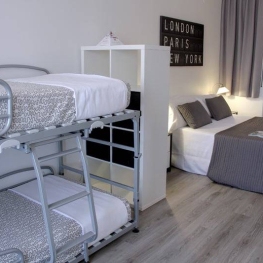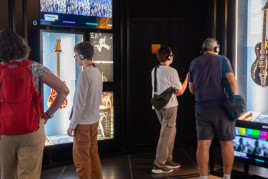Catalonia before 1714
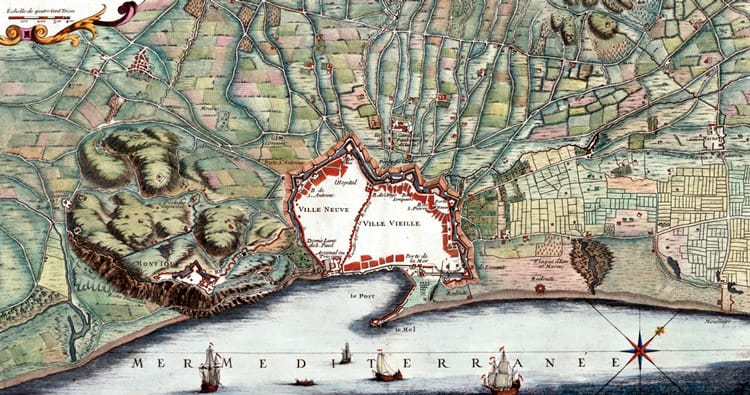
This route femTurisme.cat we go into the historical background of the War of Succession, the reactions caused and institutions that Catalonia had at the time. This will allow us to know one of the most important buildings are in the Catalan capital: the Palau de la Generalitat.
And is that once the War of Succession (1702-1715) between Charles of Austria and Philip of Anjou by the succession began in the throne of the Spanish monarchy, was served a long period of tension and battles, not only to the peninsula but also across the European continent. This war is the first Hispanic civil war and has its origin in the proclamation of Philip V (1702) as the new monarch of the Spanish monarchy.
The Grand Alliance of the Hague, formed by the Netherlands, England, Portugal and the Austrian Empire, not agreed and in 1703 proclaimed as King Carlos III of the Spanish monarchy.
Thus, it was clear that there were two distinct camps: the supporters of Carlos III (The Grand Alliance of the Hague and Catalonia) and supporters of Philip of Anjou (French and Bourbon).
Carlos V and Felipe III
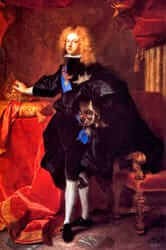 Come to the throne to 1702, Felipe V makes a series of concessions to the General Court of Catalonia. However, relations with France and Catalonia Bourbon family were not too good.
Come to the throne to 1702, Felipe V makes a series of concessions to the General Court of Catalonia. However, relations with France and Catalonia Bourbon family were not too good.
Added to this, clandestinely produced an opposite feeling to everything around Philip V, especially the repressive policy devido exercising real authority on the Catalan people.
Supporters of Carlos III, consisting of a large sector of the bourgeoisie of Barcelona , the gentry and the peasantry accommodated Plana de Vic, received broad social support for the defense of the constitutions and wide international support, thanks to Genoa Pact, signed in 1705 with England. This allowed Allied troops landed in Barcelona and a period of widespread revolt started throughout the country and was proclaimed as King Carlos III.
This step is a new front facing international war.
Reactions
The answer of Philip V was the occupation of Valencia, Aragon and western regions of Catalonia, naming and the Battle of Almansa (1707), and abolished the privileges of Valencia and Aragon.
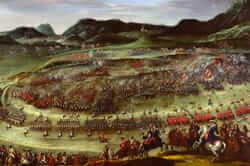 Although the war situation was clearly in favor of the Allies broke stability two facts: the coming to power of the Tories (Conservatives) in Britain and the death of Joseph I, Emperor of the German Empire and brother of Carlos.
Although the war situation was clearly in favor of the Allies broke stability two facts: the coming to power of the Tories (Conservatives) in Britain and the death of Joseph I, Emperor of the German Empire and brother of Carlos.
On the one hand, conservatives favored avoid conflict by commercial interests who had with Latin America, and on the other, the state's uneasy allies regency of two such extensive dominions by the same monarch.
Therefore, in 1713 the Treaty of Utrecht, in which Philip V was recognized as king of the Spanish monarchy was signed.
Catalonia had been abandoned to their fate, but the General Meeting of the Principality Braços or Parliament convenes and, to the surprise of several European courts, the Board decided to maintain the strength and starts his Republican times.
Three Comuns Conference
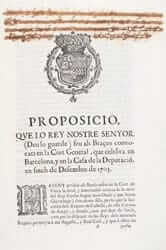 After this, the government of Catalonia resistant is in the hands of the Conference of the Three Comuns.
After this, the government of Catalonia resistant is in the hands of the Conference of the Three Comuns.
The Conference of Commons Three consisted of the Regional Government of Catalonia, the Barcelona Consell de Cent and the Military Arm of Catalonia and existed from 1697 to 1714.
Its activity was not always permanent and decisive, but it was a jointly cope totalitarianism of the Spanish monarchy. In fact, members who were part were not formalized.
It was in 1705 when the Conference of Commons Three was officially formalized as an institution. It consisted of 21 members: 9 of which were of the Generalitat and 12 of the Consell de Cent and the Military Arm.
Throughout its history was crucial in decisions made ??in Arnold Jäger, on the arrival of Carlos III in 1705, for the biennium 1712-1713 and the site of Barcelona between 1713-1714.
Provincial Government of the Principality of Catalonia General
The Provincial Council of the General of the Principality of Catalonia is the historical name given to the Generalitat de Catalunya.
Its beginnings we look at the end of the twelfth century, when first appointed in order to collect taxes and pay creditors of the king. So his role was for a long time, purely tax collection and management of public debt.
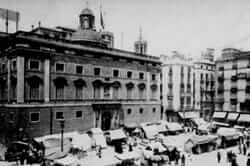 It was not until 1413 that the reforms of the Generalitat de Catalunya acquired skills in the political arena and, among its tasks included ensuring Catalan laws and constitutions.
It was not until 1413 that the reforms of the Generalitat de Catalunya acquired skills in the political arena and, among its tasks included ensuring Catalan laws and constitutions.
In the late fifteenth century, the Generalitat de Catalunya had political, judicial and military jurisdiction. But once the War Reapers, the institutional competences of this body had been weakened.
The Provincial Council of the General of the Principality of Catalonia was made ??up of six members: two church representatives, 2 representatives and 2 royal military representatives.
The church was considered the Deputy Chairman of the General Council.
The seat of the Provincial Government of the Principality of Catalonia General stood at building street Sant Honorat Barcelona , after several extensions that would become the present Palace of the Generalitat de Catalunya.
Consell de Cent of Barcelona
The Consell de Cent of Barcelona was a government institution that was active from the thirteenth century to the eighteenth century.
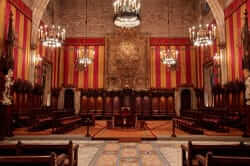 Initially, it was to represent the real power of the very agents that maintained peace and order in the city and neighborhood assemblies presided. Later, a council where the leaders and government officials gathered in the city was formed. And finally, similar advice to that he had implanted in Aragon, after several modifications, was configured with a Director elected by the Consell de Cent personalities was configured.
Initially, it was to represent the real power of the very agents that maintained peace and order in the city and neighborhood assemblies presided. Later, a council where the leaders and government officials gathered in the city was formed. And finally, similar advice to that he had implanted in Aragon, after several modifications, was configured with a Director elected by the Consell de Cent personalities was configured.
However, the high number of members difficult meetings and decided to form a new council with thirty people called Trentenario., This served to prepare proposals that are then addressed in the Consell de Cent.
The Consell de Cent is abolished September 15, 1714 by Marshal James Fitz-James Stuart, together with the Government, after position in favor of Carlos III.
The Consell de Cent is the only institution abolished at this time that has not recovered.
Military Arm of Catalonia
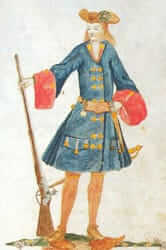 The Military Arm of Catalonia was the body representing the noble estate in the courts, which already had this feature in its origins, which lie in the thirteenth century.
The Military Arm of Catalonia was the body representing the noble estate in the courts, which already had this feature in its origins, which lie in the thirteenth century.
In modern times the people who were part of the military arm of Catalonia were: first, the Duke of Cardona, as the preeminent member of the Catalan nobility, and on the other, marquises, earls, viscounts, barons, knights, and other donzells lay people who had vassals, though not noble.
In the early seventeenth century, a position he led the Military Arm of Catalonia was created: it was the Military Arm Protector The first case was of Alentorn Onofre..
With the Decree of Nueva Planta, the Military Arm of Catalonia and the institution disappeared, somehow, will bring together the nobles of the Royal Cos noblesse de Catalunya and the early twentieth century.
The Palau de la Generalitat
The Palau de la Generalitat de Catalunya is located in the Gothic Quarter of Barcelona , right on Plaça de Sant Jaume.
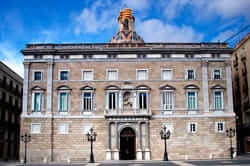 Not since the late thirteenth century to find that the Provincial Government of the Principality of Catalonia General was established in this building, but it is not until December 3, 1400 the representatives of the three arms: Alfonso de Tous, Jaume Marcos and Ramon Desplà bought the building for 38,500 merchant Pere Brunet salaries. But in those days, the situation of the building stood the street entrance of Sant Honorat.
Not since the late thirteenth century to find that the Provincial Government of the Principality of Catalonia General was established in this building, but it is not until December 3, 1400 the representatives of the three arms: Alfonso de Tous, Jaume Marcos and Ramon Desplà bought the building for 38,500 merchant Pere Brunet salaries. But in those days, the situation of the building stood the street entrance of Sant Honorat.
Notably, 1705 to 1706, Archduke Carlos Cortes held in the Hall of Sant Jordi to emphasize the respect he had for the Catalan institutions and constitutions, as it was in this room where the General Council met. In Living Contrafacciones met the Military Arm and both some sessions of the Conference of Three Comuns els were also held.
In terms of architecture, the building has undergone several changes that have resulted in a mixture of elements, which in turn have made a building without artistic continuity between inside and outside. However, it is considered the first great Renaissance facade of civil architecture in Catalonia.
You may also be interested in: Commemorates the events of 1714 | September 11, the Catalan National Day 2026
What to do
Gimcanes GeoCats
BarcelonaDiscover Barcelona through GeoCats in the most comfortable and fun way possible!…
Gymkana Digital Turística
BarcelonaTourist and cultural routes in a gymkhana format. Completely free and without…
MEV, Museu d'Art Medieval
VicConferences, guided tours, thematic tours, workshops, courses... Discover the permanent collections and…
Where to eat
Fàbrica Moritz Barcelona
Barcelona (a 1.3 Km)The Moritz Factory Barcelona is a unique space, divided into three floors,…
Restaurant Windsor
Barcelona (a 2.2 Km)The Windsor restaurant, located in Barcelona, is a benchmark of contemporary Catalan…
Where to sleep
Casa de colònies La Cinglera, Fundesplai
Vilanova de Sau (a 12.4 Km)La Cinglera is located in the Vilanova de Sau municipality. It is…
Ca l'Andreu Ecoturisme
Tiana (a 14.3 Km)Spending a few days in an authentic 15th-century farmhouse is priceless. Renovated…
Generator Barcelona
Barcelona (a 2.2 Km)Generator Barcelona is a high-design hostel located in the heart of Barcelona,…
Aparhotel Atenea Calabria
Barcelona (a 2.1 Km)The Calabria apartments offer a stunning location in the Eixample district of…

